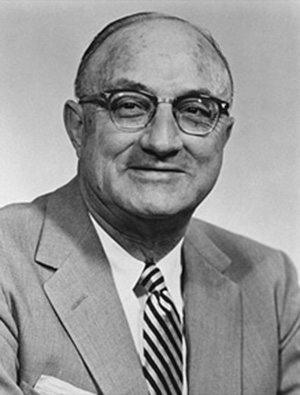Harold Anderson was a star athlete at Akron Central High School growing up, earning All-Ohio honors in football and basketball while also setting a state record in the low hurdles as a member of the track and field team. He ultimately carried that success to Otterbein as a four-sport standout before going on to an illustrious coaching career. Anderson garnered 11 varsity letters as a Cardinal during the early 1920’s, twice earning all-conference and all-state honors in basketball (1923/1924) before receiving team MVP honors his senior season. He was also a talented halfback on the gridiron, collecting first team All-OAC recognition after leading the ‘23 team to a 5-3 record… the program’s only winning record of the decade.
Harold immediately began constructing his basketball coaching legacy after graduation in 1924, posting a combined high school record of 124-38 across stints at Wauseon and Toledo Waite. Included in the stretch was three city championships and two state runner-up finishes. Pioneering the run and gun, up-tempo style of play, Anderson then transitioned to the college ranks where he guided the University of Toledo to a 142-41 record in eight seasons, including a third-place finish in the 1942 National Invitational Tournament (NIT). He would eventually begin his most decorated run later that year by taking over the duties at Bowling Green State University.
Bowling Green was coming off its second-straight losing season, but Anderson wasted no time turning things around by winning his first 14 games and starting to build a national power. His Falcons earned the school’s first-ever NIT bid in 1944, and then advanced all the way to the national championship contest in 1945 before falling to a DePaul team lead by star center George Mikan.
Anderson experienced ups and downs throughout his long tenure at BGSU before reaching the pinnacle of his career in the early 1960’s, when he landed one of the nation’s top recruits in future NBA Hall of Famer Nate Thurmond. Bowling Green won the MAC Championship the following year before setting the stage for a memorable 1962-63 season, which marked the final campaign on the sidelines for Anderson.
The Falcons went 19-8 and won another MAC title, but the biggest moments occurred during the regular-season with a pair of magical victories. Bowling Green hosted second-ranked and eventual national champion Loyola (Chicago) in a packed arena of more than 5,700 fans, dominating the Ramblers by a score of 92-75 in what many note as the greatest triumph in the history of BG basketball. History was made again just two nights later as the team survived, 68-67, over Notre Dame to give Anderson his 500th college coaching victory.
The Falcons later achieved their first-ever NCAA win by defeating Notre Dame for the second time in three weeks, and Anderson ultimately headed off into the sunset as Thurmond turned pro. The decorated coach went 362-185 at Bowling Green, 504-226 overall and took nine BGSU teams to the postseason. He was one of the first coaches to win 500 games at the college level and produced nine All-Americans.
Anderson remained at Bowling Green to serve as Athletic Director following his retirement from coaching and, in 1985, was fittingly inducted into the National Basketball Hall of Fame alongside Thurmond. The BGSU basketball arena was named in Anderson’s honor in 1963, he was inducted into the school’s HOF in 1966, and then later passed away in 1967 at the age of 64.


